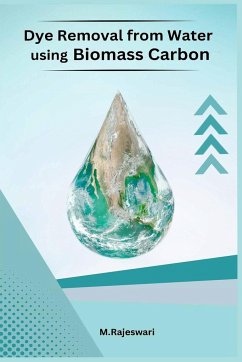The removal of dyes from water is a crucial task due to the harmful effects of these chemicals on both human health and the environment. In recent years, adsorption using biomass carbon has emerged as a promising technique for effective dye removal from water. In her work, "Dye Removal from Water using Biomass Carbon," M. Rajeswari explores the potential of this technique for environmental remediation. The author discusses the various aspects of dye removal from water using biomass carbon, including the adsorption kinetics and isotherms, BET theory, surface area, porosity, carbonization, pyrolysis, and surface chemistry. The adsorption capacity and efficiency of various carbon adsorbents obtained from agricultural and industrial waste are also discussed. The author also focuses on the utilization of these wastes for sustainable water treatment, emphasizing the importance of waste utilization in achieving water sustainability. The article describes the importance of eco-friendly technology for wastewater treatment, particularly for the textile and dyeing industry. The author examines the adsorption of synthetic dyes, natural dyes, azo dyes, anthraquinone dyes, and triarylmethane dyes using biomass carbon. The isotherm models, kinetic models, and thermodynamics of adsorption are discussed, along with column adsorption, batch adsorption, and fixed-bed adsorption. The author also highlights the significance of regeneration and desorption in the practical application of biomass carbon for dye removal from water. The work concludes with a discussion of the potential of biomass carbon for environmental remediation and the future directions of research in this field. Overall, "Dye Removal from Water using Biomass Carbon" provides valuable insights into the use of biomass carbon for sustainable water treatment and environmental remediation.








